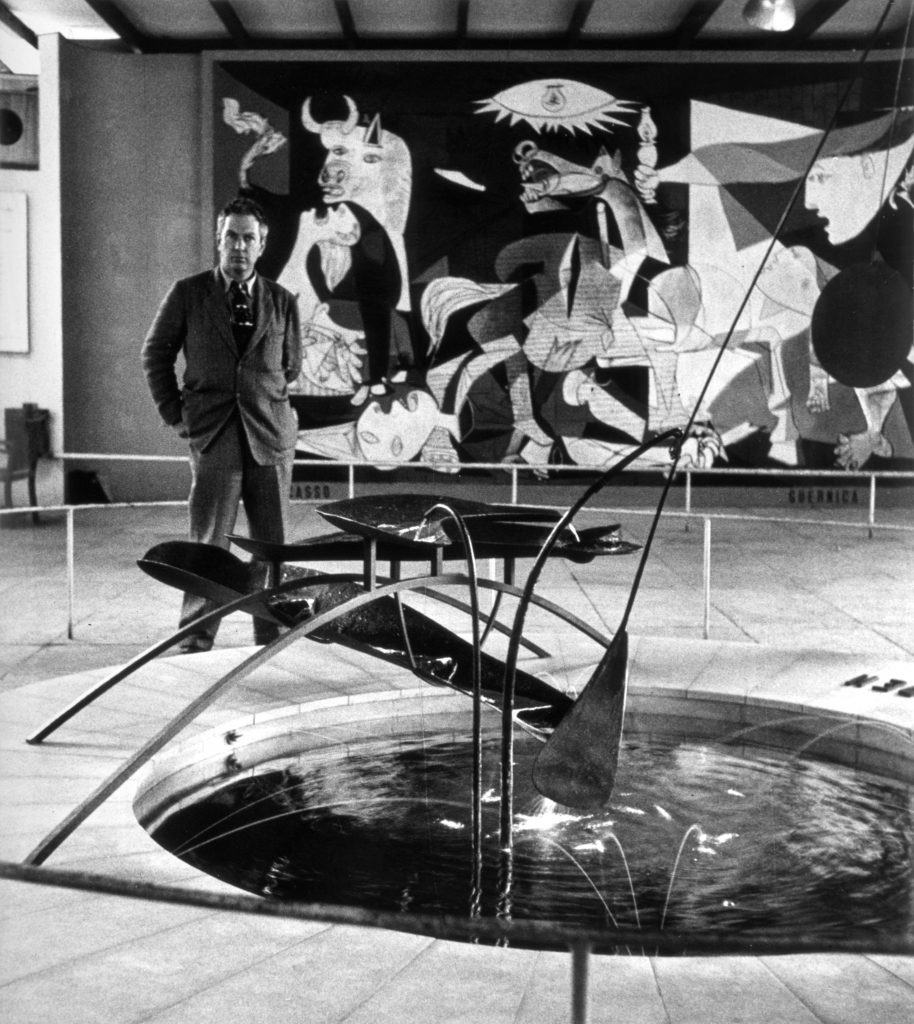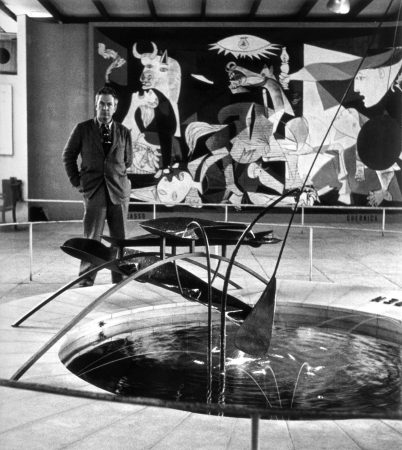


Calder, Alexander. “Mercury Fountain.” Stevens Indicator, vol. 55, no. 3 (May 1938).
MagazineCalder and Miró visit the Spanish pavilion under construction at the 1937 World’s Fair site in Paris. Calder meets the pavilion’s architects, Josep Lluís Sert and Luis Lacasa. Sert eventually commissions Calder to make Mercury Fountain for the Spanish pavilion. Mined in Almadén in
Spain, the mercury symbolizes Republican resistance to fascism.
The Spanish pavilion, featuring Picasso’s Guernica, Miró’s Le Faucheur, and Calder’s Mercury Fountain, opens at the Paris World’s Fair.
Calder gives the Mercury Fountain to the Fundació Joan Miró, Barcelona. The museum was designed by Sert. The fountain is installed in June 1975.
In 1937, Calder completed Devil Fish, his first stabile enlarged from a model. He received two important commissions: Mercury Fountain (1937) and Lobster Trap and Fish Tail (1939). His first retrospective was held in 1938 at the George Walter Vincent Smith Gallery in Springfield, Massachusetts, followed by another in 1943 at the Museum of Modern Art in New York.